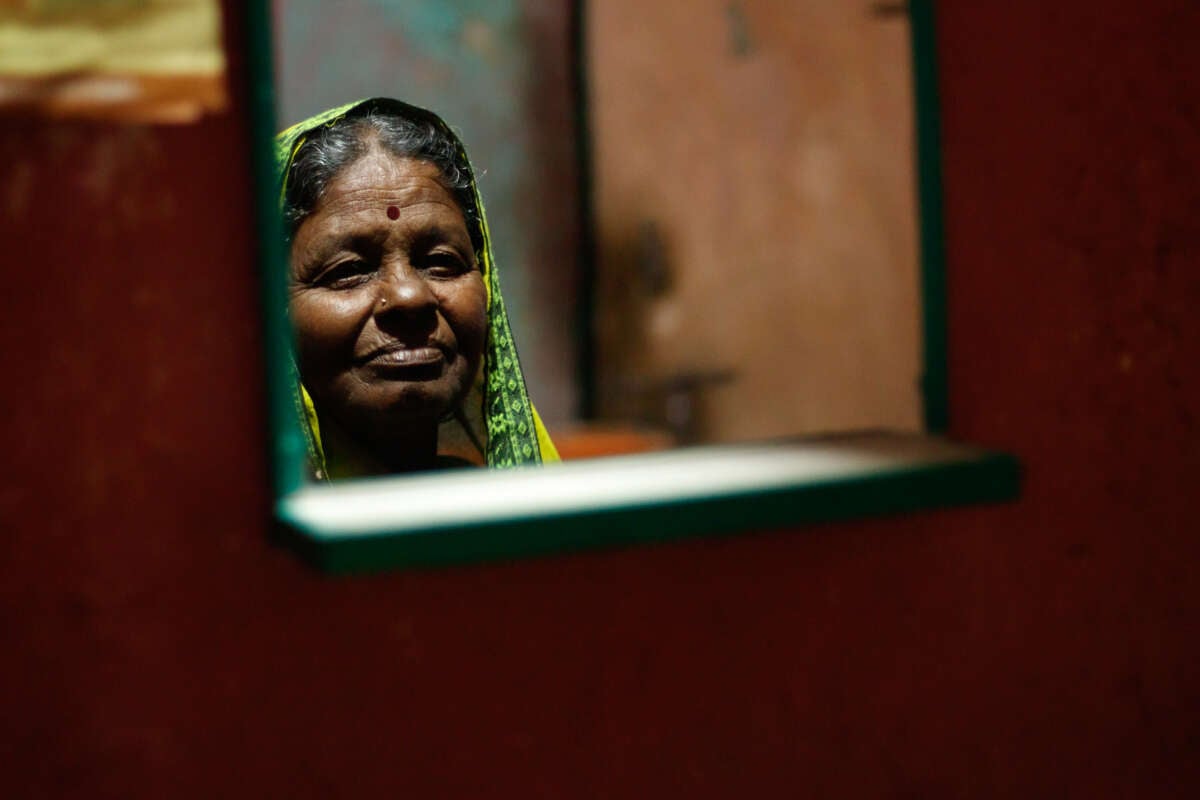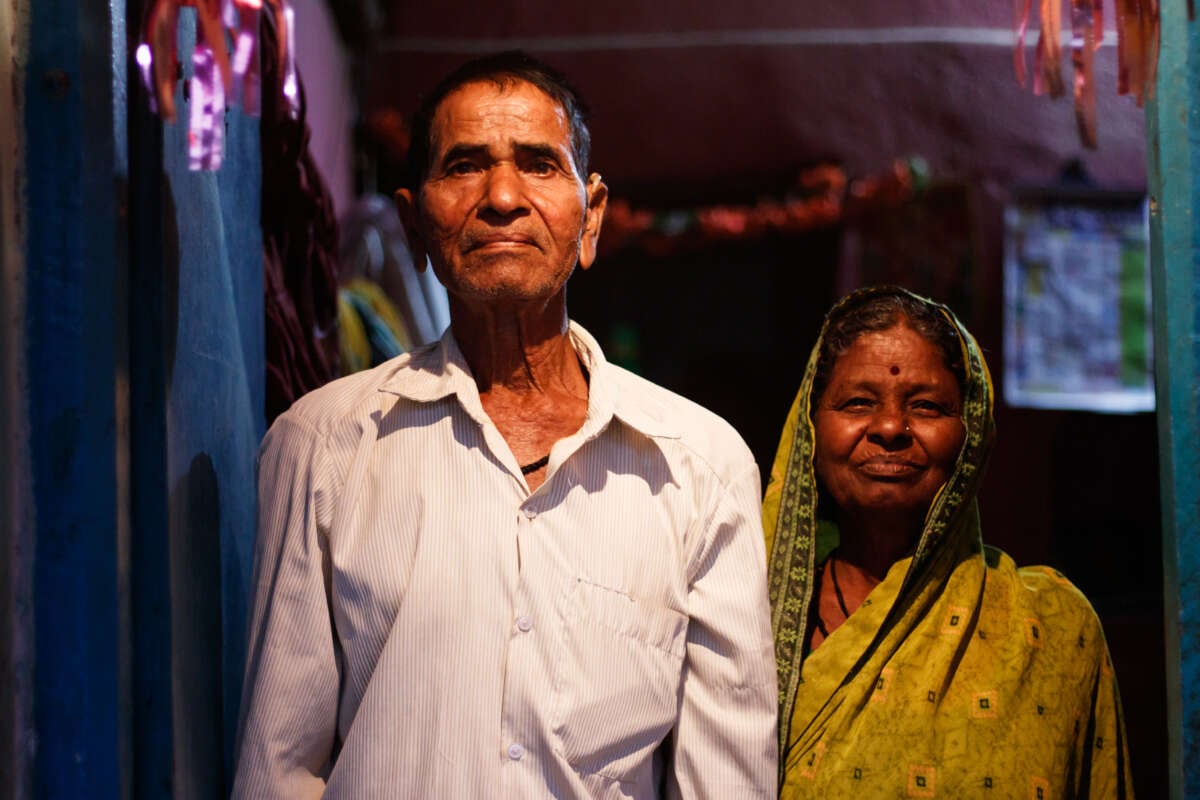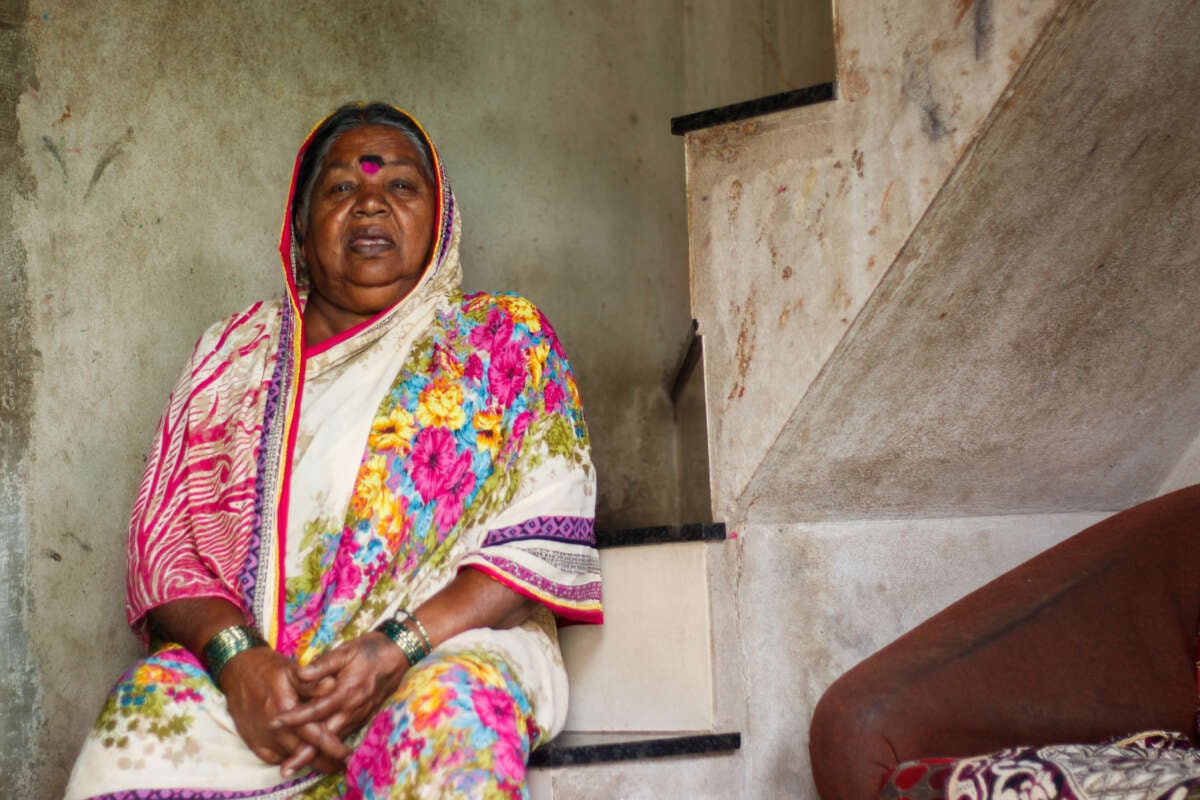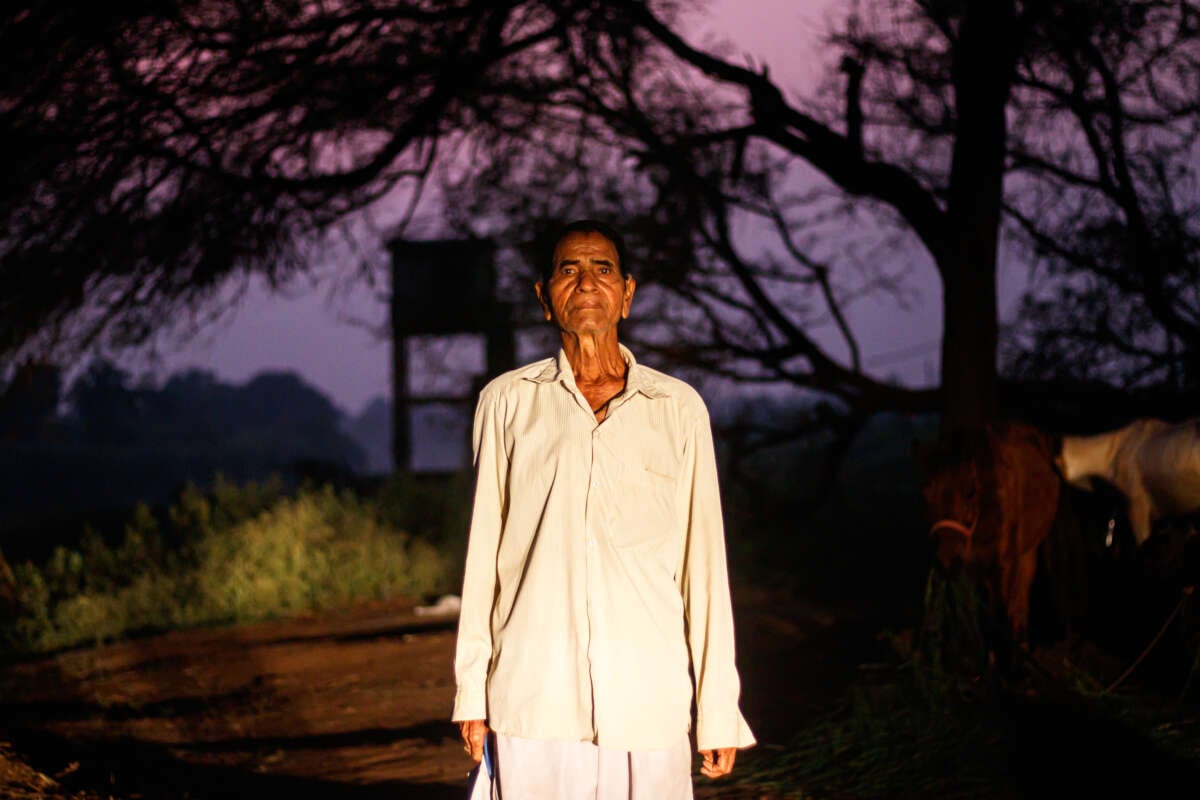Whenever farmer Namdev Kamble visits a doctor, he remembers the hundreds of trees that once surrounded him. “We live in the same area today, but everything around us has changed completely,” he said in a voice heavy with nostalgia and loss.
On his way to his farmland in Shirdhon village of India’s Maharashtra state, Kamble would see the giant tamarind, babul, neem, and several other types of trees. “They gave relief and comfort,” he said. Over the years, these trees were cut to pave the way for broader roads, houses, industries and commercial crops like sugarcane.
Kamble finds it difficult to share his experiences. “It’s a completely different feeling. Sometimes, I feel anxious, nervous, and then I feel like I miss something, although I live in the same place,” the 77-year-old told Truthout.
Kamble has been experiencing solastalgia, a form of emotional distress faced when the environment undergoes significant changes. It is caused by climate change, deforestation, rapid urbanization, and other environmental factors. Scholar Glenn Albrecht first introduced this term at a conference in Montreal in 2003, highlighting the unique mental pain of seeing one’s home environment degrade.
In his paper, Albrecht describes solastalgia as the pain experienced when the place one resides in and loves is under immediate assault. Derived from the word solace, Albrecht says, “Solastalgia is a form of homesickness one gets when one is still at home.”
Over the years, research on solastalgia has increased. However, studies remain limited, particularly in lower- and middle-income countries, which are severely impacted by the climate crisis. In India, the effects of this gap are becoming evident. As recurring floods, heat waves, and other climate impacts intensify, health care workers in India note rising instances of solastalgia, a deeply personal and distressing experience for those affected.

Memories Tied to Surroundings
Kamble has been experiencing solastalgia for the past six years as he has witnessed environmental changes in his village. He remembers the Balanites aegyptiaca, commonly known as Hinganbet trees, which are over 19 feet tall. “There used to be thousands of them, and we would wash clothes using the fruit’s pulp,” he said. “Back then, washing soaps were hard to find in the village.”
Today, not a single such tree remains in his village. Moreover, Shirdhon has been grappling with the impacts of rising temperatures and recurring floods, which have further deepened Kamble’s feelings of solastalgia.
Kamble, who owns an acre of land, says the environment began to change over the last two decades, particularly after the trees disappeared. “Earlier, even after heavy rains, the water would drain within two days. Now it stays for over eight days, destroying all the crops and houses.”
“If neglected, solastalgia risks becoming a chronic condition that no one takes seriously until it reaches a point of unbearable or even fatal severity.”
Recurring floods have left him with mounting stress. Like Kamble, many Shirdhon residents, especially older ones, remain affected by the trauma of floods.
A government report from 2024 points out that 50 percent of the climate change-affected population in India suffers from post-traumatic stress disorder (PTSD). Floods alone affected more than 218 million people in India from 2015 to 2020. However, what remains hidden in these numbers is the prevalence of solastalgia.
Sharada Jagtap, a community health care worker from Maharashtra’s flood-affected Kavatheguland village, emphasizes the need for support and understanding — both from the government as well as other community members. “Over the years, there has been a rise in stress levels, anxiety and mental health issues caused by recurring floods and changes in the environment,” she told Truthout.
The Growing Prevalence of Solastalgia
India experienced extreme weather events on 255 out of 274 days in the first nine months of 2024, according to an analysis by the Center for Science and Environment, an Indian think tank.
Many people like Kamble struggle to adapt to the changes and havoc these disasters bring. Research from northern India’s Bihar state found that climate change leads to loss of traditional customs and nature-related practices, which can eventually cause solastalgia. The study concluded that involuntary separation from traditional farm work, forced adaptation methods, loss of cultural practices and reduced self‐worth in coping with the deteriorating environment have all been concerns for parts of the state’s rural population. “The changing climate instigates feelings of emotional distress, resulting in adverse mental health and psychological well‐being outcomes,” the study found.
This phenomenon has been observed in other countries as well. A study of U.S. and U.K. residents found anticipatory solastalgia (worry about future environmental losses) to be a distinct response to climate change, and should not be conflated with generalized worry. In Australia, a study found solastalgia in bushfire-affected communities. The researchers described solastalgia as a “distinct challenge,” affecting not only bushfire-impacted communities but also those who perceived a profound loss of the unique elements that made their environment special, including native mammals and birds. The Australian study warned that environmental management that ignores local knowledge exacerbated solastalgia, leading to feelings of powerlessness. Another study from rural Australia found that while the word itself was not commonly used, Indigenous communities described experiencing feelings associated with solastalgia following unprecedented floods and bushfires.

Deteriorating Health
With rapid changes in the climate and the village surroundings continuing to degrade, Kamble has begun to experience increased anxiety and stress. In the past five years, he says he has visited a doctor over 150 times, seeking treatment for stress, severe body pain and inflammation. “I feel helpless when I look at my surroundings, which causes me a lot of stress,” he said. This chronic stress eventually snowballed into hypertension.
He has now stopped working in the fields, further straining his family. “Earlier, he never fell sick, but now he visits a doctor almost every 15 days,” shared his wife, Tayna Kamble, who is in her late 60s and works on the farm to help the family.
Susi Ferrarello, an associate professor of philosophy at California State University, East Bay, believes solastalgia will become an increasingly common phenomenon. “It is essential to prepare to support the growing number of individuals experiencing this unique form of anxiety, which cannot be treated in the same way as other forms of anxiety,” she told Truthout. To do this, psychologists and clinical practitioners need to recognize solastalgia as a legitimate psychological phenomenon worthy of attention and study.
Jagtap says a major issue community health care workers like her face is the lack of awareness. “Many people aren’t even aware they are dealing with solastalgia,” she said. During her routine visits, she asks people about their mental health and connects them with mental health care professionals.

Unable to Share the Feelings
Shakuntala Mohite, 67, from Kurundvad town in Maharashtra, fondly remembers the days over a decade ago when she walked 15 kilometers to reach the farmland where she worked. “Hundreds of big trees surrounded the road,” she recalled.
While returning from work, it was a ritual for Mohite and her friends to sit beneath one of these trees for lunch. However, over the years, the number of trees steadily declined. Somehow, she began coping with the reality — and that’s when a flood devastated her house in 2019. Before she could recover from the trauma, another flood struck in 2021, submerging her house under seven feet of water.
The emotional distress of losing her house and surroundings started deteriorating her health, which she said led to severe anxiety and stress. Two years ago, she stopped working in the fields. Like Kamble, she also falls sick frequently.
“What will the young generation know of what the world looked like earlier? In the quest for rapid development, we are losing our connection to nature,” Mohite told Truthout.
Mohite barely expresses her emotions to anyone. “Who should I share such emotions with?” she said.
Ferrarello commented that human beings can adapt and adjust to almost anything — however, she warns that this comes at a cost. “Nature, traditionally seen as a sanctuary where we recharge and escape the stresses of daily life — whether through holidays, hikes or relaxing days at the beach — can become a source of constant threat. When this happens, it forces individuals to retreat, living in fear that the same traumatic experience might occur again,” she explained, noting how human-induced harm to the environment can manifest into stressors. In some cases, this fear can even lead to symptoms resembling those of PTSD, she added.
“If neglected, solastalgia risks becoming a chronic condition that no one takes seriously until it reaches a point of unbearable or even fatal severity, making effective treatment much harder to achieve,” Ferrarello said, highlighting the need for a timely diagnosis and acknowledgment of people’s lived experiences.
That’s where India’s community health care workers are stepping in. After extreme weather events like floods, these health care workers visit every house and speak at length with vulnerable people, often asking them to share their emotions. “While this might not help completely, people start experiencing some sense of safety once they start sharing their traumatic experiences,” said Jagtap who has spoken to thousands of people in her 15 years of experience.
However, Kamble adds that not everyone shares their experiences, especially when they feel they have lost all hope. Kamble, who once found solace sitting under the trees in the village, said none of those trees remain, and neither do his friends, who passed away over the years. “It’s difficult to live with this.”
Our most important fundraising appeal of the year
December is the most critical time of year for Truthout, because our nonprofit news is funded almost entirely by individual donations from readers like you. So before you navigate away, we ask that you take just a second to support Truthout with a tax-deductible donation.
This year is a little different. We are up against a far-reaching, wide-scale attack on press freedom coming from the Trump administration. 2025 was a year of frightening censorship, news industry corporate consolidation, and worsening financial conditions for progressive nonprofits across the board.
We can only resist Trump’s agenda by cultivating a strong base of support. The right-wing mediasphere is funded comfortably by billionaire owners and venture capitalist philanthropists. At Truthout, we have you.
We’ve set an ambitious target for our year-end campaign — a goal of $211,000 to keep up our fight against authoritarianism in 2026. Please take a meaningful action in this fight: make a one-time or monthly donation to Truthout before December 31. If you have the means, please dig deep.
